Address
304 North Cardinal St.
Dorchester Center, MA 02124
Work Hours
Monday to Friday: 7AM - 7PM
Weekend: 10AM - 5PM
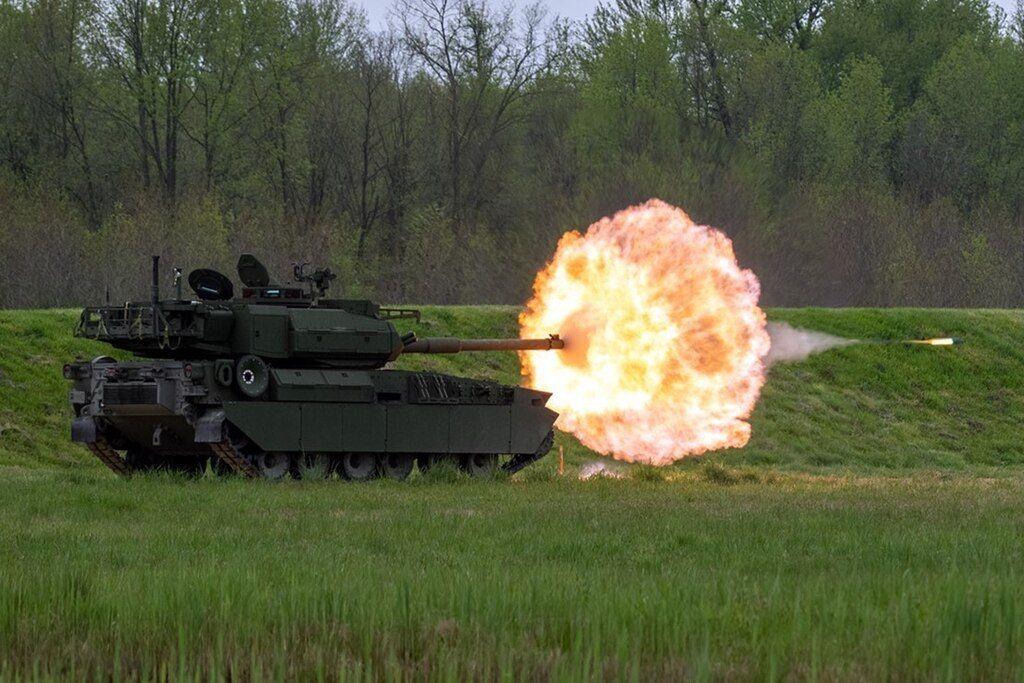
The M10 Booker (formerly the Mobile Protected Firepower program) was conceived as a lightweight, air-deployable infantry support tank to provide direct fire support to light infantry and airborne units. Development began in 2018, and a $1.14 billion contract was awarded in June 2022 for 96 initial vehicles. The Booker is a tracked, 105mm gun-armed armored vehicle named after two U.S. Army heroes, intended to fill the gap left since the retirement of the M551 Sheridan light tank in 1996.
During development, weight and design creep undermined the Booker’s original purpose. The vehicle’s weight grew to ~38–42 tons – nearly triple the weight of the Sheridan it was meant to replace – which exceeded air-drop limits. By 2015, the Army dropped the requirement for C-130 transport and airdropping the MPF vehicle, compromising its deployability. At ~42 tons, the “light” tank could not be parachuted and only one could fit on a C-17 transport, making it as logistically burdensome as an M1 Abrams. This negated the intended role of a rapidly deployable tank for austere environments. (Notably, Fort Campbell found 8 of its 11 bridges couldn’t even support the M10’s weight, revealing serious mobility limitations for airborne operations.) Cost projections also ballooned: by mid-2024 the MPF program had spent $7.2 billion, with full fleet costs estimated over $17 billion – far above initial plans.
The U.S. Army announced the cancellation of the M10 Booker in May 2025 as part of a broader Army Transformation Initiative focusing on modernization and higher-priority programs. Army leaders acknowledged that the Booker “didn’t turn out right” and lacked the capabilities needed for the future battlefield. By terminating an underperforming program, the Army intends to reinvest the savings into “war-winning capabilities” more relevant to near-peer competition. This decision aligns with a pattern of divesting systems seen as obsolete or niche for counterinsurgency in favor of systems that contribute directly to lethality in high-intensity conflict.
The Booker’s cancellation underscores a significant shift in Army doctrine post-Global War on Terror (GWOT). It signals a move away from specialized GWOT-era platforms toward preparations for near-peer conflict. The Army is prioritizing modernization of heavy forces and advanced technologies (such as a new Optionally Manned Fighting Vehicle, the XM30, and the future M1E3 Abrams tank) over light armor. This reflects an understanding that future wars against peer adversaries (China, Russia) will demand high-end capabilities – e.g. long-range precision fires, air and missile defense, cyber/EW, and survivable armored platforms – rather than lightly armored vehicles with limited deployability. In short, the Army is “ruthlessly prioritizing” capabilities that maximize lethality and deterrence in peer warfare.
For airborne and rapid-deploy units like the 82nd Airborne and 101st Airborne Divisions, the cancellation leaves a gap in organic fire support. These light infantry formations had expected to receive M10 Bookers for direct firepower (e.g. to destroy bunkers, fortified positions, or enemy light armor) in early-entry operations. The 82nd Airborne had originally requested a Sheridan replacement in 2013 for exactly this role. Without the Booker, airborne units must rely on alternate means – such as anti-tank guided missiles (Javelin teams), recoiless rifles, drone strikes, and air support – to defeat hardened targets. Any heavier armor support (like M1 Abrams tanks or Strykers) would have to deploy via airland or seaport, potentially slowing the responsiveness of airborne forces in a contested environment. This outcome may influence tactics: airborne forces will focus on securing lodgments for heavier follow-on units rather than engaging enemy armor directly, at least until a new solution is fielded.
The U.S. Army’s move can be contrasted with Chinese and Russian armored modernization strategies. China’s People’s Liberation Army has introduced the Type 15 light tank (ZTQ-15), a ~33-ton 105mm gun tank designed for high-altitude and rapid deployment operations. The Type 15 is valued for its ability to operate where heavier Type 99 MBTs cannot, and two can be airlifted by a Y-20 transport (with reports that it can even be paradropped). Russia’s military, likewise, fields the 2S25 Sprut-SD, an 18-ton airborne-capable tank destroyer armed with a 125mm gun for its VDV (airborne) troops. Both adversaries thus maintain some light armored platforms for niche roles – e.g. mountainous terrain, airborne insertions, or amphibious assaults – even as they invest in advanced main battle tanks and anti-tank weaponry. The U.S. Army’s choice to forgo its own light tank indicates a different approach: emphasizing heavier, better-protected systems and other force multipliers over a dedicated light tank, likely due to doubts about a light tank’s survivability and necessity in peer conflict.
Approximately 80–96 M10 Booker vehicles had been produced or were in production when the program was halted. The Army has not officially decided what to do with these units. Likely outcomes include: limited fielding in test or training units, to glean lessons and retain a contingency capability; storage or prepositioning for possible future use; or divestiture to foreign allies/partners. Army sources indicate the 80+ Bookers could be kept in a small number for niche roles, or stripped of sensitive tech and offered for sale to allied nations. They may also be reassigned to existing armored units or used as op-for (opposing force) surrogates in training exercises. However, given the maintenance burden and unique parts, the Army may prefer to retire the fleet rather than sustain an orphan system. No replacement light tank is currently planned – Army officials have even pondered whether a truly air-droppable armor platform might be pursued in the future, but for now the cancellation appears to close the chapter on this capability.
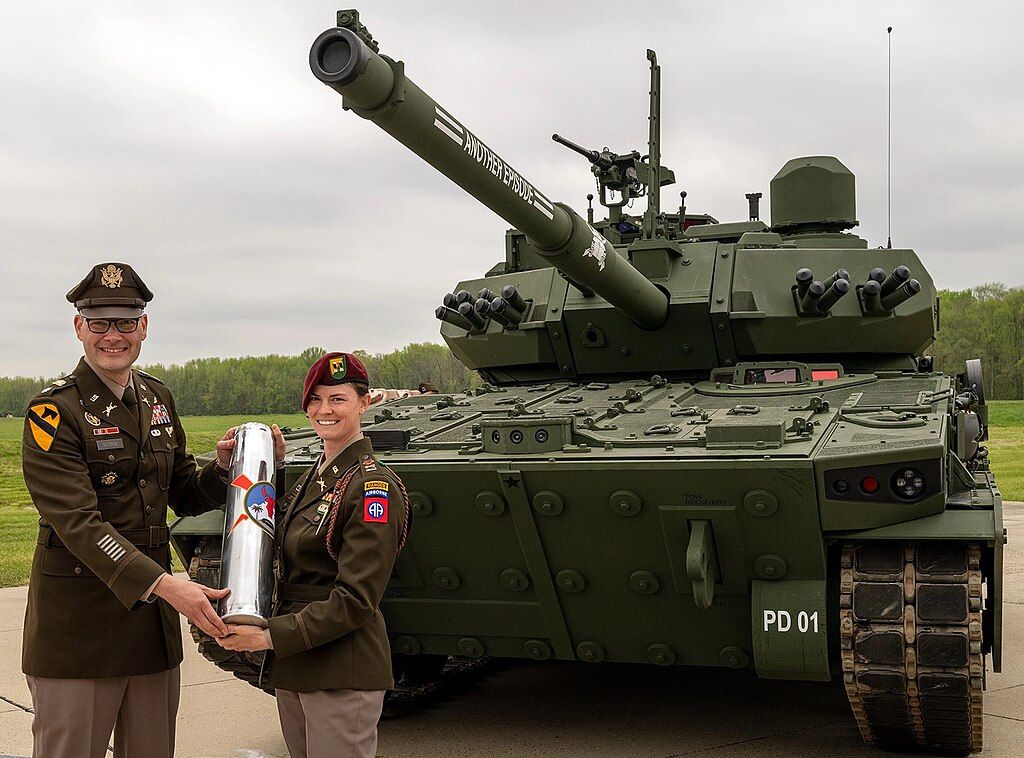
The M10 Booker (previously known as the Mobile Protected Firepower vehicle) was the U.S. Army’s first attempt in decades to field a new light tank for its infantry brigades. The program emerged from battlefield capability gaps observed in the 2000s–2010s. Light infantry units in the Global War on Terror lacked armored fire support, and in 2013 the 82nd Airborne Division formally requested a replacement for the old M551 Sheridan – an air-deployable light tank retired in 1996. The Army launched the MPF program circa 2015–2018 to address this, seeking a “Sheridan 2.0” that could accompany airborne and air-assault forces.
General Dynamics Land Systems (GDLS) won the competition in June 2022 to build the vehicle, which was later designated M10 Booker in honor of Sgt. Stevon Booker (a fallen Iraq War tank commander) and Pvt. Robert Booker (a WWII Medal of Honor recipient). The M10 was a tracked armored vehicle with a 105 mm tank gun, a coaxial 7.62 mm machine gun, and a remote .50 cal machine gun. It carries a crew of four. At under 40 tons, it was lighter than an Abrams and two could ostensibly fit on a C-17 airlifter (the Abrams being limited to one per C-17).
The Booker’s doctrinal role was to provide mobile, protected direct fire support for Infantry Brigade Combat Teams (IBCTs). In practical terms, this meant taking on enemy bunkers, machine gun nests, buildings, and light armored vehicles that would impede infantry in harsh or urban terrain. A light tank would allow infantry brigades (including airborne or air assault units) to rapidly deploy with armor and punch through resistance until heavier forces arrive. The Army planned to equip each IBCT with a company of 14 Bookers and ultimately buy about 504 vehicles (enough for all active IBCTs). This was a significant addition to infantry units that traditionally had only Humvees or Stryker APCs for fire support. Notably, the M10 Booker was never officially called a “tank” by the Army – it was often termed a “combat vehicle” – but in function it mirrored a light tank, akin to how the M551 Sheridan was an “Armored Reconnaissance/Airborne Assault Vehicle” in nomenclature but essentially a light tank in role.
The MPF program progressed relatively quickly at first. After testing of prototypes from competing contractors, GDLS’s design – essentially a downsized Abrams chassis mated to a 105 mm gun system – was selected. The vehicle was officially unveiled and named the M10 Booker in mid-2023. Low-rate initial production (LRIP) began, and by early 2025 the Army had accepted about 80 vehicles from GDLS. The 1st unit equipped was slated to be the 1st Brigade of the 82nd Airborne at Fort Bragg, followed by the 2nd Brigade of the 101st Airborne at Fort Campbell.
However, even as the first vehicles rolled out, red flags emerged regarding the Booker’s suitability. Army testers discovered that Fort Campbell’s infrastructure couldn’t support the “light” tank: 8 of 11 bridges on base would crack under the M10’s weight. This was a stark indication that the Booker had outgrown its niche. By the time of its first public live-fire demonstration in April 2024, questions were mounting inside the Pentagon about whether the MPF program had veered off course.
Several interrelated problems plagued te M10 Booker program, ultimately leading to its cancellation:
The foremost issue was that the M10 failed to remain “light”. Early in conception, the Army wanted a vehicle deployable by C-130 cargo aircraft and even droppable by parachute. This requirement was rooted in giving the 82nd Airborne the ability to insert armored firepower anywhere in the world on short notice. But as the design evolved, armor and systems added weight. By 2015, acknowledging that no vehicle with the desired protection and firepower could meet the C-130 size/weight limits, the Army removed the airdrop requirement and the C-130 transport requirement entirely The decision allowed the design to grow heavier and larger. The final M10 came in at 38–42 tons (reports vary), well above initial targets. For context, the 1960s-era M551 Sheridan weighed only ~16 tons and was parachute-droppable. Army leadership later bluntly admitted, “We wanted to develop a small tank that was agile and could be dropped into places our regular tanks can’t. We got a heavy tank.” The inability to airdrop the Booker undercut its doctrinal value for the 82nd Airborne – as one Army tech official noted, once you remove air-drop mobility, a “light” tank is no more maneuverable (operationally) than a full-sized main battle tank. At that point, the unique rationale for the Booker largely evaporated.
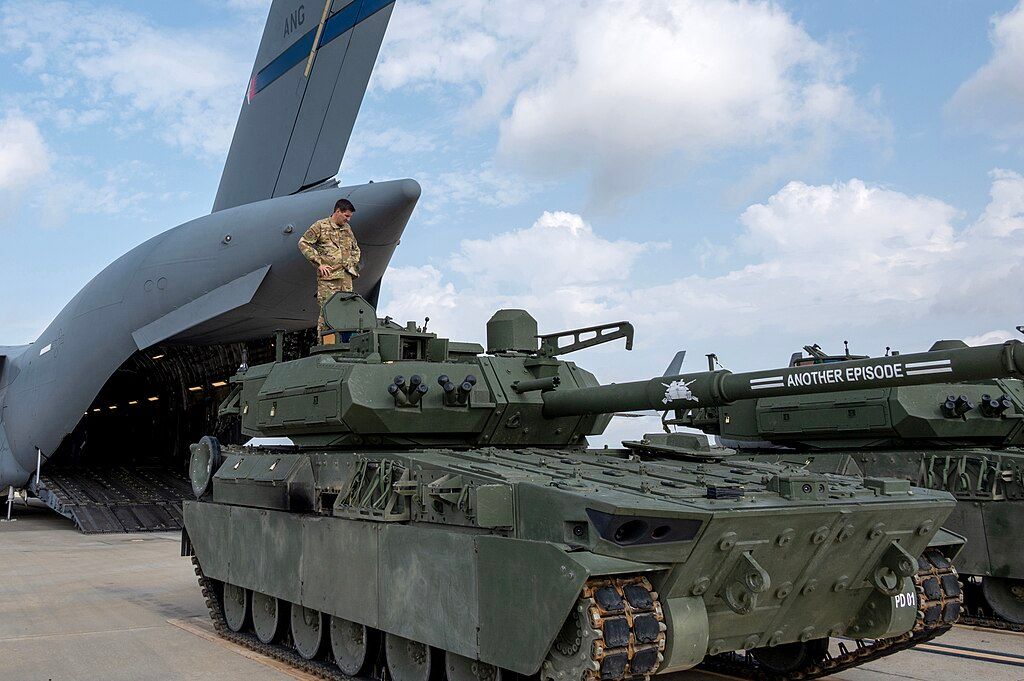
The high mass brought other constraints. Only one M10 could be flown per C-17 strategic airlifter (similar to a 70-ton Abrams in practice), whereas initially the Army had hoped to transport multiple light tanks at once to speed deployment. Its footprint and weight made it impractical for many existing roads and bridges in austere areas – highlighted by the Fort Campbell bridge failure analysis. Essentially, the Booker would have trouble deploying to, or operating in, exactly the kind of remote, infrastructure-poor battlefields where a light tank would be most useful (jungle, mountain, or developing regions). This incompatibility with “light infantry operations” was a critical flaw.
The program’s budget grew substantially. By mid-2024 the MPF had consumed $7.2 billion, and continuing to procure the full planned fleet plus lifecycle support would exceed $17 billion. This was far above early estimates and raised eyebrows in the context of other Army priorities. Unit cost estimates reportedly climbed to the level where an M10 would cost nearly as much as an Abrams tank. Army leaders grew concerned they were pouring money into a system that no longer provided commensurate value – a textbook “sunk cost fallacy” situation, as Secretary of the Army Daniel Driscoll later remarked. The Secretary of Defense’s April 2025 memo on acquisition reform explicitly pushed the Army to stop investing in programs that weren’t paying off and to cut its losses early. The M10 Booker became an example of this new discipline.
Another factor that irked Army leadership was the maintenance concept tied to the Booker. The procurement contract had restrictive “right-to-repair” clauses requiring that many repairs be done by the manufacturer (GDLS) rather than Army ordnance crews. This meant higher sustainment costs and potential delays, as even minor fixes might require contractor support. Lawmakers like Sen. Elizabeth Warren criticized these terms as benefiting contractors at the expense of readiness. In an era when the Pentagon is trying to empower field units to maintain equipment (and even use 3D printing for spare parts), the Booker’s logistics model was seen as regressive. This issue, while not the primary reason for cancellation, compounded the sense that MPF was a flawed program not aligned with the Army’s future direction.
The context in which the M10 was conceived (early 2010s) differed from that of the mid-2020s. Initially, the Army wanted a light tank to support infantry in scenarios like Afghanistan-style outposts or rapid interventions where Abrams tanks were too heavy or too slow to arrive. Over time, however, the U.S. security focus shifted toward near-peer adversaries. The “light tank for low-intensity conflicts” concept became harder to justify against threats like modern anti-tank missiles, drones, and peer armor. By 2025, Army officials questioned whether the Booker brought any advantage to a high-intensity fight. It was not heavily armored enough to slug it out with enemy tanks, yet not light enough to deploy by parachute; it sat in an awkward middle. Army Chief of Staff Gen. Randy George described the M10 Booker as “a classic example of sunk cost fallacy, and the Army doing something wrong”, acknowledging it should have been halted earlier once its fundamental premise was compromised. In sum, the Booker became a solution in search of a problem – it no longer fit neatly into the Army’s doctrine for great-power conflict, which places emphasis on either very survivable systems or very deployable ones.
These accumulating issues set the stage for the decision to terminate the program. By early 2025, the Army’s senior leadership, backed by the Secretary of Defense, opted to pull the plug before the Booker entered full-rate production.
The cancellation of the M10 Booker is a telling indicator of how U.S. Army doctrine and priorities are evolving as the era of counterinsurgency recedes and concerns about conventional war with near-peer adversaries rise. Key strategic implications include:
During the two decades of the Global War on Terror, the Army fielded or considered many specialized systems aimed at guerrilla or asymmetrical threats (MRAP vehicles for IED protection, smaller tactical drones, light strike vehicles, etc.). The M10 Booker itself, while intended for high-end fights as well, had roots in addressing the kind of quick reaction fights the U.S. found itself in during interventions and stability operations. Its cancellation, alongside other program cuts, signifies a pivot away from counterinsurgency-oriented platforms. In 2024 the Army also terminated the Future Attack Reconnaissance Aircraft (FARA) program – a scout helicopter reminiscent of Vietnam/GWOT needs – citing changing battlefield realities favoring drones and long-range missiles. It also chose to end procurement of the venerable Gray Eagle surveillance drone and even cut orders for Joint Light Tactical Vehicles (JLTVs) and up-armored Humvees. All these moves suggest the Army is divesting systems that were useful in permissive or low-tech environments to free resources for peer war capabilities.
The Army Transformation Initiative (ATI) announced in 2025 during the beginning of the second Trump Administration, and in line with the Trump Doctrine, calls for eliminating “unnecessary programs” to “ruthlessly prioritize fighting formations that directly contribute to lethality.” In practice, this means channeling budget and attention to modernization efforts with clear payoff in a fight against a technologically advanced foe. For ground forces, that includes the Next Generation Combat Vehicle program (with the XM30 mechanized infantry combat vehicle slated to replace Bradley IFVs) and a host of upgrades to heavy armor. Indeed, immediately after canceling the Booker, Army leaders stated they intend to accelerate development of the XM30 and the M1E3 Abrams next-generation main battle tank. These platforms, with advanced armor, sensors, and firepower, are seen as more relevant to high-intensity conflict than a lightly armored 105mm gun platform. The Army is also heavily investing in Long Range Precision Fires (LRPF) like hypersonic missiles and extended-range artillery, as well as air defense – areas critical for peer conflict but less so in counterinsurgency. The shift in funding can be viewed as the Army recapitalizing for large-scale combat operations, having learned from observing near-peer war (e.g. the Russia-Ukraine conflict) that survivability, range, and networked capability are paramount.
Strategically, the Booker’s cancellation is being held up as an example of a new willingness in the Pentagon to cut losses on troubled programs before they consume decades of effort. Army Secretary Driscoll’s candid admission “We got the Booker wrong” and SecDef Pete Hegseth’s sweeping acquisition reform memo indicate top-down pressure to avoid repeating past procurement debacles (like the FCS program, Comanche helicopter, etc., which lingered too long). The Army is combining its Futures Command with its Training & Doctrine Command (TRADOC) to streamline how requirements are set and met. By killing the Booker at LRIP stage, the Army demonstrated a proactive course correction. This in turn frees up over $10 billion that would have been spent on a system of questionable value, allowing those funds to be reinvested in R&D and procurement of technologies such as AI-enabled battle management, autonomous vehicles, and improved munitions. The strategic message to defense industry is also notable: the Army will not continue buying a vehicle just because it exists – companies must meet the Army’s real needs or risk termination. This is meant to incentivize better performance and innovation aligned with the Army’s modernization strategy.
The Army’s force design is increasingly benchmarked against threats posed by China and Russia. Light tanks have much less utility in the envisioned Indo-Pacific scenarios or a European high-intensity war. For example, in a conflict in the Baltics or South China Sea, the priority is likely power projection and survivability under fire rather than light armor deployment. China’s heavy investment in anti-access/area-denial (A2/AD) capabilities (missiles that threaten airlift and sealift) means the U.S. must consider how to get heavier forces into theater safely – perhaps by securing ports/airfields via other means than parachuting a handful of light tanks. Furthermore, precision-guided anti-tank weapons, ubiquitous on modern battlefields, threaten any lightly armored vehicle. The Army appears to have decided that if it’s going to invest in a new armored platform, it should be one that can overmatch the enemy, not just a compromise for easier transport. This realization aligns with lessons from Ukraine’s battlefields: heavily armored tanks supported by infantry and drones have survived better than isolated lighter vehicles, which have proven extremely vulnerable. In essence, the strategic thinking is that our limited budget should build forces that can decisively win against peers, and a 40-ton light tank did not fit that calculus.
In summary, at the strategic level the M10 Booker’s termination highlights the U.S. Army doubling down on modern, high-end capabilities and shedding systems seen as remnants of a past era. The Army is preparing for potential conflicts where dominance is determined by range, protection, networking, and precision – areas where the Booker’s contributions were marginal. The transformation is ongoing, but the “light tank that grew too heavy” will serve as a case study in aligning procurement with doctrine and threat. As one Pentagon official put it, the Booker was “a stark reminder of what can happen when the system is checking the boxes but doing no critical thinking – a mistake the Army is keen not to repeat.
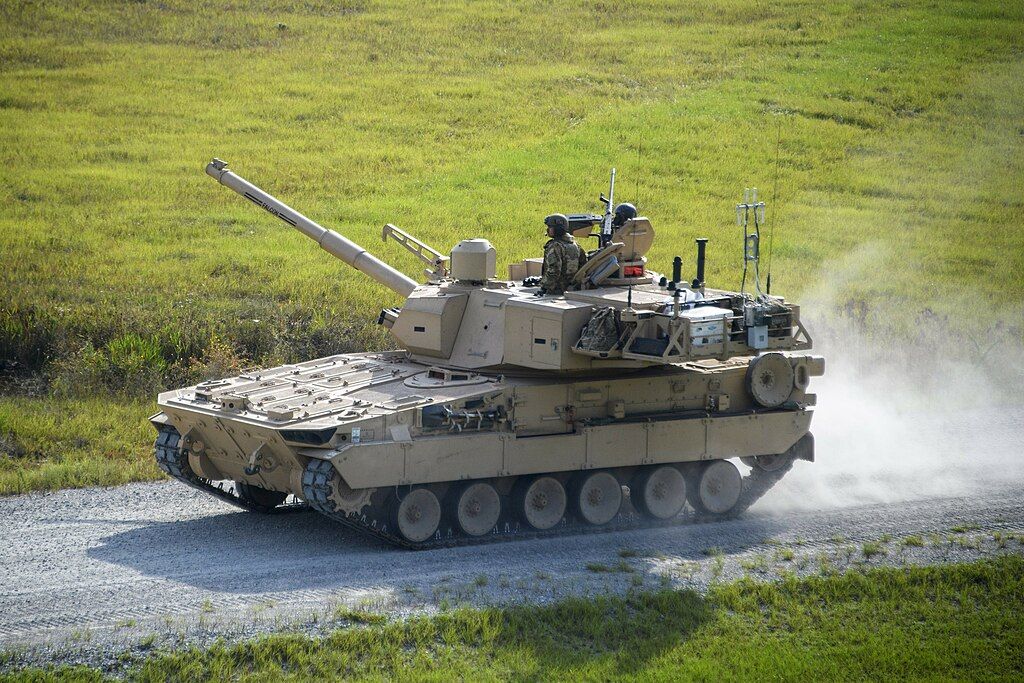
At the tactical level, the most directly affected parties are the Army’s airborne and light infantry units, which were the intended users of the M10 Booker. The cancellation has several consequences for these forces:
The 82nd Airborne Division (the Army’s principal parachute assault force) and the 101st Airborne Division (Air Assault) had each anticipated receiving a company of M10 Bookers to enhance their punch. These units historically lack tanks; the 82nd last had M551 Sheridans in the 1990s. The Bookers would have given them a credible armor threat and bunker-busting capability in early-entry operations. Now, without the M10, those divisions remain reliant on infantry-carried or airdropped weapons to defeat armor and fortifications. This means greater emphasis on anti-tank guided missiles (e.g. Javelin, which infantry can carry) and disposable loitering munitions, as well as the support of Air Force or Army aviation strikes. While lethal, those alternatives do not provide the sustained fire or protection of a tank. For instance, a Javelin team can destroy an enemy APC or disable a bunker, but they cannot suppress enemy positions with cannon fire or survive return fire the way a Booker crew inside armor might. Immediate fire support gaps for airborne infantry include engaging moving armored targets (tanks, BMPs) and quickly breaching obstacles under fire – roles a light tank was meant to cover.
One effect is that airborne units must operate in conjunction with heavier forces sooner in a battle. An airborne brigade dropped into enemy territory that encounters serious armored resistance will likely need to hunker down or avoid battle until an armored brigade combat team (with Abrams tanks and IFVs) can arrive. The original idea behind MPF was to bridge this gap, giving light forces a chance to maneuver and fight for 48-72 hours on their own. Without it, the 82nd or 173rd Airborne Brigade (in Europe) might be more limited to missions like seizing an airfield or interdicting light forces – but not decisively engaging an armored unit. They would focus on securing entry points and then guiding in heavier follow-on forces. This was essentially the reality after the Sheridans were retired in 1996; the 82nd compensated with things like Humvee-mounted TOW missiles and aerial support. We can expect similar doctrine now: use of the Air Force’s firepower (air strikes, AC-130 gunships), artillery fire from distant units (HIMARS or 155mm airlifted in), and avoidance of tank battles until Abrams arrive. In practice, this means the 82nd and 101st will shape their training and operational plans with the assumption that any serious anti-armor capability must come from outside attachments. The 101st Air Assault can move light vehicles by helicopter, but nothing in the inventory now has a tank gun – they’ll rely on utilities like the Infantry Squad Vehicle or DAGOR buggies with mounted weapons for mobility, but not armored firepower. The light infantry may also invest more in anti-armor tactics (ambushes, obstacle creation, calling joint fires) versus head-on engagements.
The Army will likely look for other ways to support light infantry in the absence of a dedicated light tank. Some possibilities already being discussed include:
Without the Booker, units like the 82nd will adapt by training more with what they have. Expect to see airborne infantry conducting more exercises on defeating armor with indirect fires and engineering obstacles. They may train alongside armor units to learn how to better coordinate once link-up happens. The absence of an in-house tank also means the infantry must practice calling for fire support (JTAC skills for close air support, or artillery liaison) to a greater degree. In the 101st, which can airlift light armored vehicles (like Polaris MRZR or M-ATVs), experimentation might continue on how to mount heavier weapons on them for fire support, though nothing matches a tank gun. The Army might also revisit air-droppable vehicle concepts – for instance, smaller turreted vehicles like the vintage British Scorpion light tank or modern airmobile platforms – but any such project would be in early conceptual phases. As of now, officials stated it’s “not clear” if the Army will pursue a new tank that can be airdropped; thus the tactical assumption is that light infantry will fight without tanks for the foreseeable future.
The 82nd maintains a brigade as the Global Response Force (GRF), ready to deploy on short notice. The idea of pairing that GRF with a company of Bookers for a more formidable entry force is now off the table. This could slightly reduce the deterrent effect of the GRF – adversaries know that any U.S. airborne insertion comes initially without heavy armor. However, given the U.S. can rapidly deploy heavier forces within days, the difference may be marginal in strategic deterrence. Still, within those critical initial 24-48 hours of a crisis, commanders will have to carefully weigh what missions an airborne battalion can tackle on its own. They are less likely to be sent to directly assault enemy armored units or heavily fortified towns; instead, their missions may focus on targets that can be seized by infantry and airpower alone.
In essence, the tactical trade-off of canceling the Booker is that U.S. light forces lose some theoretical autonomy and shock effect in exchange for the Army investing in other capabilities. Airborne and rapid response units will remain highly deployable but must avoid becoming decisively engaged with enemy armor until reinforced. It is a scenario reminiscent of the early Cold War (before the Sheridan’s introduction), where U.S. paratroopers in Europe knew their job was to delay and harass enemy tanks, not defeat them outright. The Army is accepting this risk, presumably because the resources and attention freed by canceling the light tank will bolster overall combat power in more impactful ways.
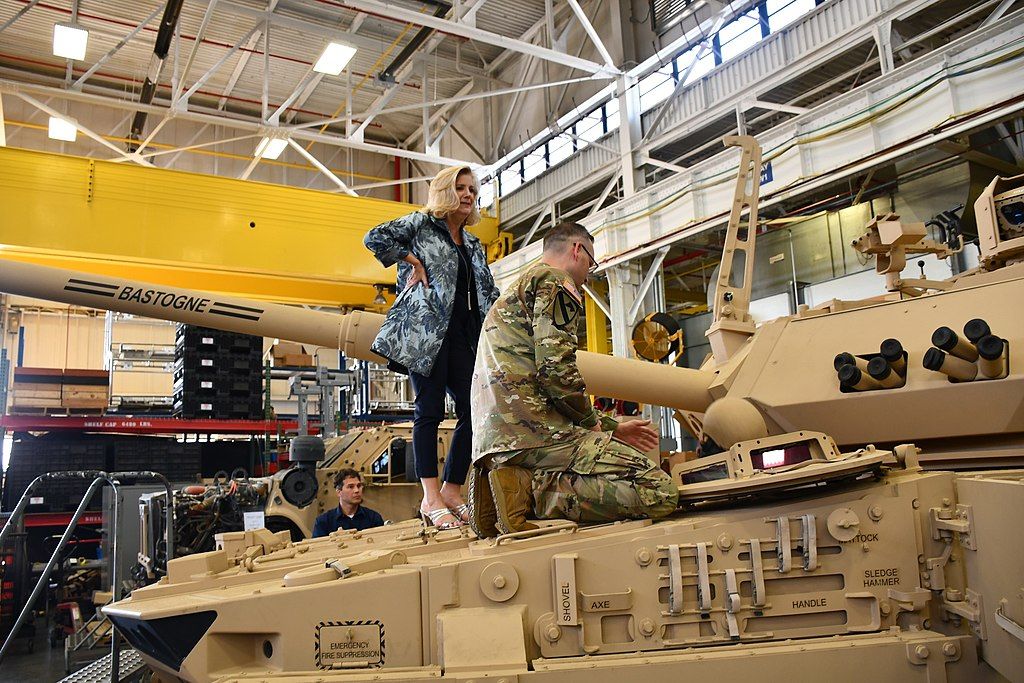
The U.S. Army’s decision can be viewed in context with how other major military powers approach the balance of light vs. heavy armored forces. China and Russia, two primary near-peer competitors, have made different choices that shed light on strategic considerations:
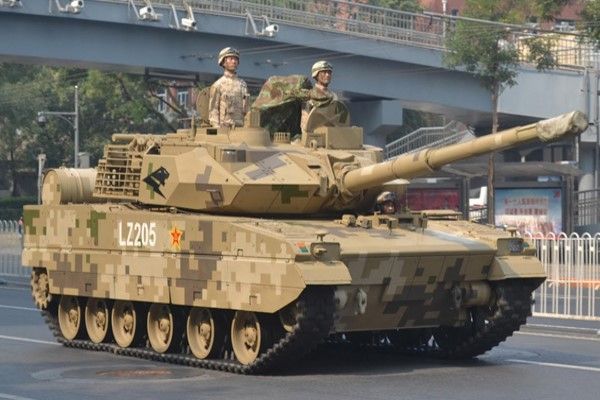
China has in recent years fielded the Type 15, a new-generation light tank that fills a similar niche to what the M10 Booker was intended for (mobile firepower in restrictive environments). The Type 15 weighs about 33 tons (36 tons with add-on armor), significantly lighter than the Booker. It mounts a modern 105 mm gun (capable of firing APFSDS and guided projectiles) and has a high power-to-weight ratio engine suitable for Tibet’s high altitudes. Notably, the Type 15 was designed to operate in terrain like mountains, plateaus, and jungles where heavier Chinese tanks (like the 55-ton Type 99A MBT) cannot easily go. Its lighter weight also means two Type 15s can be carried by a Xi’an Y-20 transport aircraft, and Chinese sources claim it can be paradropped if needed. In PLA service, Type 15s have been deployed to Tibet and Xinjiang (for mountain warfare potential against India) and to Chinese amphibious and rapid deployment units. Beijing’s commitment to the Type 15 suggests they value a mix of heavy and light armor – heavy armor for main forces, and light armor for expeditionary or terrain-specialized units. It’s a recognition that not all wars will be fought on open plains; some will be in islands or highlands where logistic constraints favor lighter armor. From a U.S. perspective, China’s use of a light tank could pose challenges in certain scenarios (e.g. if the PLA were to employ Type 15s in a swift island invasion or peacekeeping operation). However, the U.S. appears to be betting that its other assets (attack helicopters, aircraft, long-range fires) could counter such light tanks rather than matching them tank-for-tank. The Chinese approach shows a different doctrinal priority – they are willing to invest in a dedicated platform for niche roles (with the attendant costs of maintaining an additional tank type) to ensure flexibility in complex terrain.
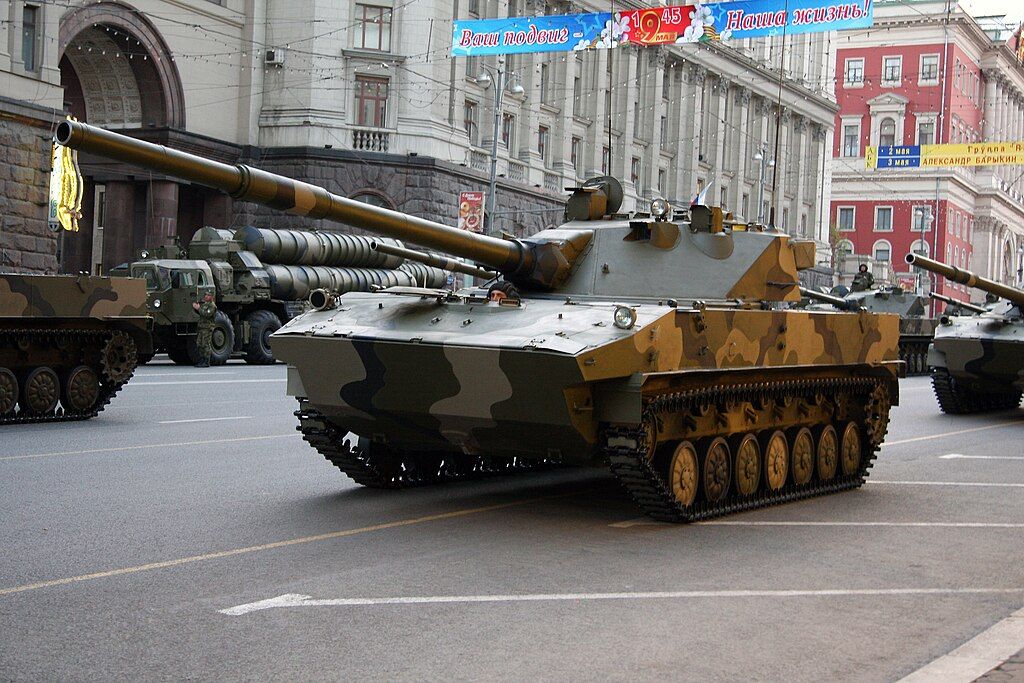
Russia traditionally has placed great emphasis on its airborne forces (VDV), and uniquely, it equips them with dedicated light armored vehicles that can be airdropped with crews inside. The 2S25 Sprut-SD is a prime example – essentially a light tank destroyer: it is a 18-ton tracked vehicle with a 125 mm smoothbore gun (the same caliber as on Russian MBTs). The Sprut-SD has minimal armor (aluminum hull, only proof against 23 mm cannon in front arc) but packs the firepower of a full tank, and it’s amphibious and parachute-droppable. Only a couple dozen Spruts have been in service due to funding limits, but Russia has an updated Sprut-SDM1 variant in development for both domestic use and export. Alongside this, Russian airborne divisions use BMD-4M infantry fighting vehicles – also air-droppable, lightly armored tracked vehicles with 30 mm cannons and anti-tank missiles. The Russian philosophy is that airborne troops may need to fight independently behind enemy lines or reinforce flanks quickly, and thus they trade protection for firepower and deployability. This was vividly demonstrated in Cold War and continues today – though in the 2022 invasion of Ukraine, Russia’s attempted airborne assaults (e.g. at Hostomel Airport) showed the vulnerability of light armored VDV units when facing well-equipped defenders. Many BMDs were lost, and notably, Russia did not end up employing the Sprut-SD in significant numbers in Ukraine (likely because airdrop opportunities evaporated in a contested airspace). The mixed results from Russia highlight a key point: while light armor can be deployed in ways heavy armor cannot, it also suffers high attrition against modern defenses. The U.S. likely weighed this in its own calculus. The American military can deliver devastating fires from air and long-range systems, so the need to risk paratroopers in light tanks may be less. Still, Russia’s continued investment in vehicles like Sprut-SD indicates they see a role for a tank that can swim rivers, be airdropped on a whim, and engage heavy armor when there’s no alternative. In contrast, the U.S. has decided that role is not worth a dedicated platform at present – a clear divergence in force design.
Both China and Russia, while dabbling in light armor, are pouring resources into their next-generation main battle tanks and associated tech:
In comparing these strategies, we see that China and Russia maintain light armored capabilities tailored to specific operational needs (China for difficult terrain, Russia for airborne/amphibious forces). The U.S. Army’s choice to cancel the Booker suggests it currently assigns a lower priority to that niche, preferring to concentrate on capabilities that have broader applicability. American forces might counter an adversary’s light tanks not with their own light tanks, but with attack helicopters (e.g. AH-64E Apaches, which are lethal to armor and deployable), close air support, or guided missiles delivered by infantry or drones.
One implication is that if U.S. light forces ever face Chinese Type 15s or Russian Spruts, they will need to rely on those other assets to level the playing field. Conversely, adversaries might note that the U.S. lacks a light tank and seek to exploit that gap in very specific scenarios. For example, China could employ Type 15s in an airborne assault or island operation expecting that U.S. rapid response units have nothing equivalent. However, such a scenario would also invite U.S. airpower, which historically has been the counter to enemy armor.
Ultimately, the U.S. approach emphasizes technological overmatch and joint integration over maintaining every possible niche platform. This is a gamble that the capabilities being pursued (hypersonic weapons, integrated command and control, superior training, etc.) will offset not having a light tank. The Chinese and Russian mixed armor doctrine is a bit more granular – they accept some redundancy in having light and heavy tanks to cover all terrain and contingencies. Time (and future conflicts) will tell which approach is more validated. In the meantime, the U.S. Army will watch developments like China’s Type 15 closely, and should threat scenarios change (for instance, if lightweight armored units prove decisively useful for an adversary), the Army could always revisit the concept of an air-deployable armored platform.
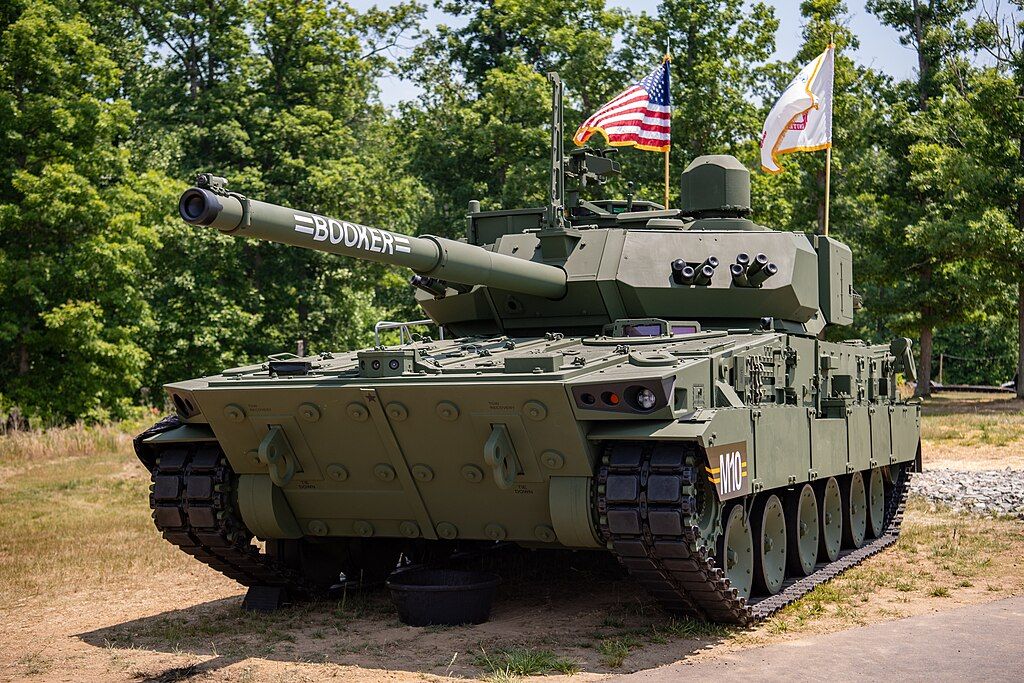
With the M10 Booker program ended, attention turns to what becomes of the roughly 80+ vehicles already built or in production and the broader gap in capability. While official decisions are pending, we can assess likely outcomes:
The Army may choose to field a small number of Bookers in a limited capacity as a stopgap or to glean operational data. For instance, one idea is to equip a contingent of the 82nd Airborne or an Army National Guard unit with a platoon or company of Bookers to conduct trials. This would allow the Army to test tactics and gather user feedback on employing a light tank in modern scenarios (data that could inform future programs). It could also provide a modest capability if an emergency required it. However, maintaining training, spare parts, and logistics for just a handful of vehicles is costly and inefficient. The Breaking Defense report noted uncertainty if the Army will field any of the low-rate production vehicles at all. It’s possible the Army will simply use a few Bookers at armor school or combat training centers for demonstration and then phase them out.
A straightforward path is to place the Bookers into storage depots as a strategic reserve. They could be preserved in climate-controlled facilities (e.g., Sierra Army Depot) in case a need arises. This is what happened with the cancelled M8 Buford Armored Gun System in the 90s – a few prototypes ended up in storage. If the Army later finds a use (or if Congress mandates reconsideration), the M10s could be pulled out. Otherwise, over time they might be scrapped or used for target practice. The drawback here is the money sunk into those units yields no active value, but it avoids near-term support costs.
Perhaps the most likely disposition floated by officials is to offer the M10 Booker to foreign partners or allies. By removing any sensitive U.S.-only tech (communications, encryption, composite armor elements), the U.S. could either sell or grant these vehicles to countries that need light tanks. Potential interested parties might include nations with rapid deployment forces of their own or those operating in terrain unsuitable for heavy tanks. For example, countries in Asia or Africa that face insurgents with fortified positions might see utility in a 105mm gun tank. Allies currently using older light tanks or fire support vehicles (like some South American armies or Asian allies like the Philippines, Thailand, etc.) could also benefit. The Booker is a modern platform with advanced optics and fire control, making it quite lethal against legacy armor. However, challenges to this option include: training and maintenance needs for the recipient (it’s a new type of vehicle with no existing fleet for spares), and the fact that only ~80 are available (not enough for a large army’s adoption, but perhaps enough for a smaller country or for trials). Still, foreign interest could defray some U.S. costs and diplomatically reward an ally. Notably, one report suggested even selling them stripped-down abroad was on the table. We may see offers made through the Excess Defense Articles (EDA) program if no U.S. use is retained.
Another proposal is to reassign some Bookers to armored units or cavalry squadrons in heavy divisions. Conceivably, an Armored Brigade Combat Team could take a company of Bookers as a medium weight scout or to add a fourth maneuver company in a battalion. The 105mm gun (with modern ammo) can defeat most older tanks and all light vehicles, so in less intensive fights it could perform well. For example, a Booker might accompany Stryker or infantry units where an Abrams is overkill. The U.S. Army historically did this with some canceled systems; e.g., a few M8 AGS were used by the 82nd for a short time in trials. However, mixing one-off vehicles into units creates supply and training complications. An ABCT soldier is trained on Abrams and Bradley – adding Booker would require new manuals, parts, etc., which the Army may resist given the whole point was to streamline and reduce “boutique” equipment. Thus, while possible on paper, reassignment to regular armored units seems unlikely unless done in a very limited experimental way.
A creative use would be to turn the Bookers into opposing force (OPFOR) training simulators at combat training centers (NTC in Fort Irwin, JRTC in Fort Polk). These vehicles could be painted to represent enemy armor (for instance, to simulate a notional enemy’s light tanks or IFVs). The advantage is the Army gets value training its units against a system with tank-like capabilities (better than pretending a Humvee is a tank, as often done). M10s could possibly mimic threats like the Chinese Type 15 in exercises. The OPFOR units would get a firepower boost (firing training rounds) to challenge rotating brigades. This repurpose would still require maintenance crews and parts, but because training centers have dedicated logistics, it could be manageable. Over time, though, without a supply chain, even these vehicles would degrade. Still, it could squeeze some training utility out of the investment.
It’s important to note that Army officials have not announced any follow-on program to fulfill the original mission of the Booker. In the press briefing, they even questioned whether there was a need to pursue a true air-droppable tank in the future. The focus instead is on improving what the Army calls its “31+4” signature modernization efforts (of which MPF was one, now minus one). The absence of a replacement means the capabilities gap for infantry support will persist until/unless another solution is presented. Conceivably, the Army could circle back to industry in a few years if doctrine changes, perhaps asking for a lighter MPF II that truly meets the deployability requirements (leveraging newer materials or unmanned design). But given the current stance, the Army will likely channel its modernization energy elsewhere first.
GDLS, the contractor, will pivot to other projects (they are heavily involved in the Abrams modernization and robots programs). There may be some political pressure from congressional districts tied to the Booker production line to find a continued use – for instance, if a tank plant was expecting to build 500 units and now stops at under 100, jobs are affected. It’s possible Congress could suggest an alternate use for the chassis (e.g., as support vehicles or gunnery trainers). Yet, with top Army leadership unified on the cancellation and overall defense budgets tightening, a reversal appears unlikely. The Booker’s fate seems sealed as a cautionary tale rather than a stepping stone.
The cancellation of the M10 Booker light tank program marks a notable inflection point in U.S. Army force development. It reflects a clear-eyed assessment of changing needs: the Army is shedding a platform that, while useful in certain scenarios, does not fit the emerging paradigm of multi-domain operations against peer adversaries. By doing so, the Army acknowledges that resources and attention must concentrate on capabilities that provide a decisive edge – even if it means accepting short-term gaps or forgoing specialized tools like a light tank.
From a policy and defense analysis perspective, this move underscores the Army’s commitment to transformation and tough decision-making. The strategic implication is that the U.S. is prioritizing quality and relevance of capabilities over quantity or diversity. The tactical implication is that some units will adjust their methods without the convenience of a dedicated light tank, relying on joint fires and allied support to fill the void. Near-peer competitors will note America’s choices – and the U.S. will closely watch their developments (China’s light tanks, Russia’s airborne armor) to ensure that this gap does not become a vulnerability.
In the near term, we expect the 80-odd existing Bookers to be handled in a low-profile manner – possibly a combination of storage and quiet transfer to partners – as the Army moves on. The lessons learned from the M10 Booker’s requirements creep and cancellation are already influencing how the Army approaches new programs (with more stringent requirements control and willingness to cancel early). For the defense community, the Booker saga reinforces the importance of aligning design, doctrine, and realistic threat assessment. It answers the question posed early in the program – “is the M10 Booker a tank?” – with a final verdict: whatever one calls it, the Army determined it no longer needs it.
You’ve made even the simplest ideas feel profound with the care and depth you bring to your writing.